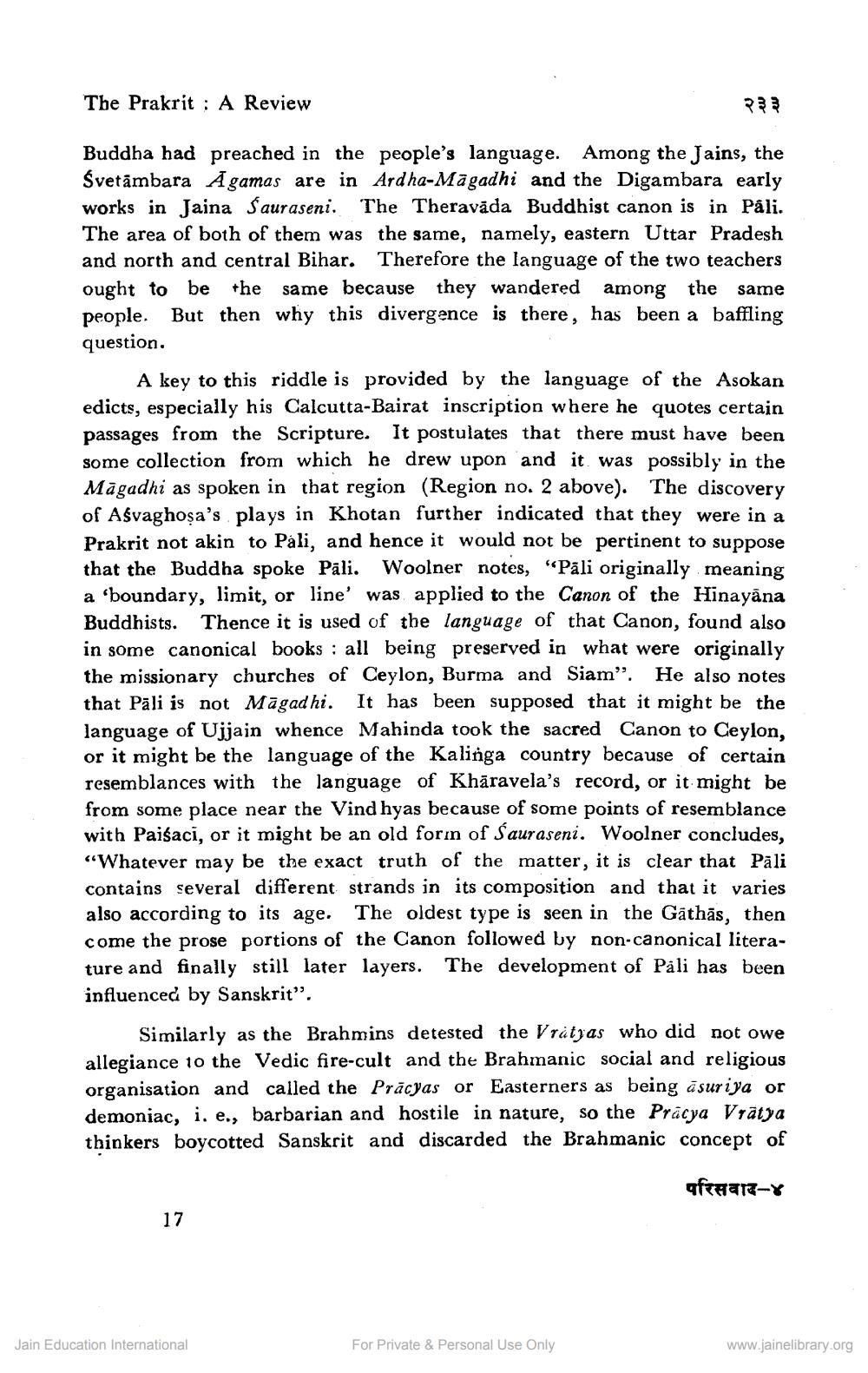________________
The Prakrit: A Review
२३३
Buddha had preached in the people's language. Among the Jains, the Svetambara Agamas are in Ardha-Magadhi and the Digambara early works in Jaina Sauraseni. The Theravada Buddhist canon is in Pali. The area of both of them was the same, namely, eastern Uttar Pradesh and north and central Bihar. Therefore the language of the two teachers ought to be the same because they wandered among the same people. But then why this divergence is there, has been a baffling question.
A key to this riddle is provided by the language of the Asokan edicts, especially his Calcutta-Bairat inscription where he quotes certain passages from the Scripture. It postulates that there must have been some collection from which he drew upon and it was possibly in the Magadhi as spoken in that region (Region no. 2 above). The discovery of Asvaghoşa's plays in Khotan further indicated that they were in a Prakrit not akin to Pali, and hence it would not be pertinent to suppose that the Buddha spoke Päli. Woolner notes, "Pāli originally meaning a boundary, limit, or line' was applied to the Canon of the Hinayāna Buddhists. Thence it is used of the language of that Canon, found also in some canonical books : all being preserved in what were originally the missionary churches of Ceylon, Burma and Siam". He also notes that Pāli is not Māgadhi. It has been supposed that it might be the
nguage of Ujjain whence Mahinda took the sacred Canon to Ceylon, or it might be the language of the Kalinga country because of certain resemblances with the language of Khāravela's record, or it might be from some place near the Vind hyas because of some points of resemblance with Paisaci, or it might be an old form of Sauraseni. Woolner concludes, “Whatever may be the exact truth of the matter, it is clear that Pāli contains several different strands in its composition and that it varies also according to its age. The oldest type is seen in the Gathās, then come the prose portions of the Canon followed by non-canonical literature and finally still later layers. The development of Pali has been influenced by Sanskrit”.
Similarly as the Brahmins detested the Vrátyas who did not owe allegiance 10 the Vedic fire-cult and the Brahmanic social and religious organisation and called the Pracyas or Easterners as being a suriya or demoniac, i, e., barbarian and hostile in nature, so the Pracya Vratya thinkers boycotted Sanskrit and discarded the Brahmanic concept of
परिसवाद-४
17
Jain Education International
For Private & Personal Use Only
www.jainelibrary.org




